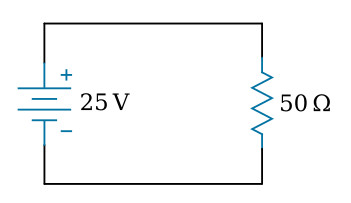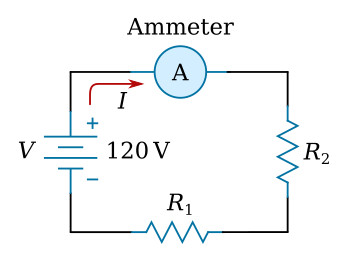Home > Textbooks > Basic Electronics > DC Circuits > Ohm's Law >
DC Circuits
Ohm's Law
In 1826, George Simon Ohm, a German mathematician and physicist, related current to voltage and resistance. The relationship known as Ohm's law states:
The current through a resistance is directly proportional to the voltage across the resistance, and inversely proportional to the resistance.
Ohm’s law may be expressed as an equation:

It is possible to rearrange this equation to solve for voltage or resistance. For example, the voltage drop across a resistor equals the product of the current through the resistor and the resistance of the resistor:
![]()
The magnitude of a resistance can be found if the current through it and the drop across it are known. The resistance is proportional to the drop and inversely proportional to the current:

Applications of Ohm's Law
Ohm's law can be applied to an entire circuit or to any part of a circuit. When Ohm's law is applied to an entire circuit, the voltage used must be the applied voltage, the current must be the current flowing through the source of voltage, and the resistance must be the resistance of the entire circuit.
Example 1
Find the current in the circuit of figure below.

Solution:

Example 2
Find the total resistance of the circuit of figure below. The current measured at
the source is 2.5 A.

Solution:







